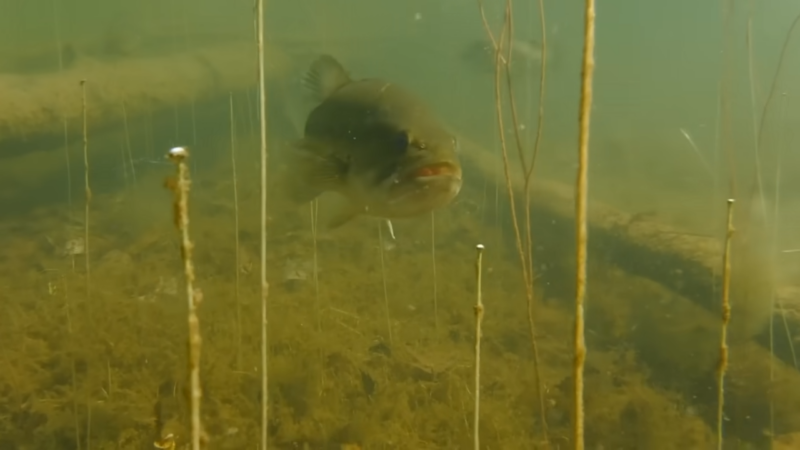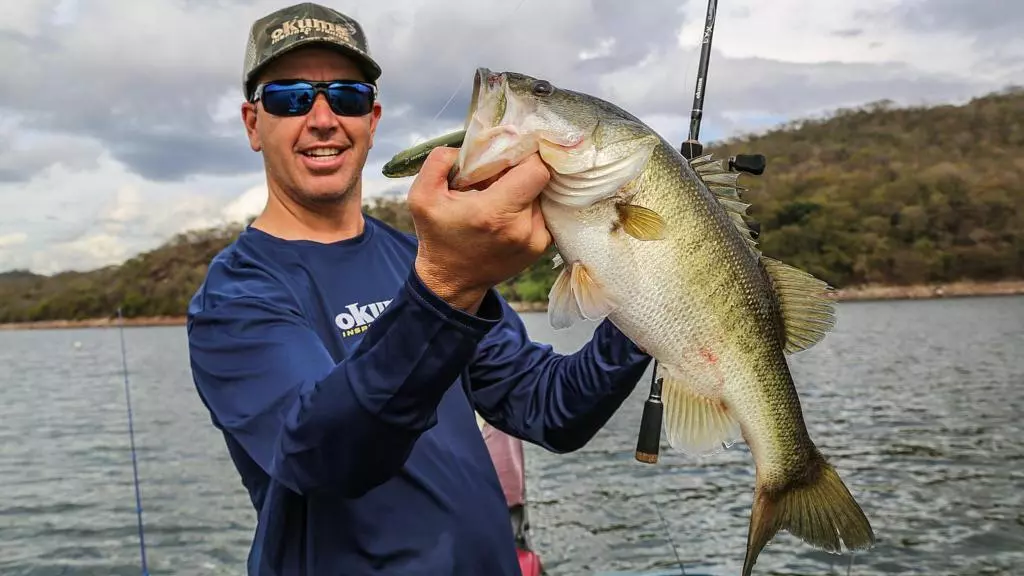Before I set out to a place to fish, I try to find what fish species I can expect in that lake or river.
Of course, knowing exactly what to expect is not an easy thing. Nevertheless, conducting thorough research is much needed.
That is why I decided to help my fellow fishermen and provide them with what they can expect at Lake El Salto.
Let’s take a look at the most prevalent ones.
6. Tilapia
- Commonly found throughout the lake
- Size: Varies; often caught as bycatch
- Techniques: Incidental catch using lures and baits for other species
- Ecological Role: Food source for larger predatory fish
Tilapia is another commonly found species in Lake El Salto.
While they are often caught incidentally when targeting other fish, they play an essential role in the lake’s ecosystem.
Tilapia vary in size and are frequently caught as bycatch, adding an element of surprise to many fishing expeditions.
From my experience, Tilapia are usually caught using lures and baits intended for other species.
Despite not being the primary target for most anglers, they provide a crucial food source for larger predatory fish like bass and catfish.
That makes them an integral part of the lake’s ecological balance.
5. Channel Catfish
- Prevalent species
- Size: Regularly caught, less targeted by sport anglers
- Techniques: Cut fish, nightcrawlers
- Fishing Experience: Known for strong fights
Channel Catfish are another prevalent species in Lake El Salto.
While they might not be the main focus for sport anglers, these fish are regularly caught and offer a unique fishing experience.
Known for their strong fights, Channel Catfish provides a thrilling challenge that many anglers enjoy.
The best baits for catching Channel Catfish include cut fish and nightcrawlers.
These fish are known for their resilience and the strength of their fight, making them a fun and rewarding catch.
While they may not be as targeted as Largemouth Bass, the excitement they offer is undeniable.
4. Shad

- Important forage fish
- Size: Small but abundant
- Techniques: Not typically targeted
- Ecological Role: Supports larger fish populations
Shad might not be the primary target for anglers, but they play a vital role in Lake El Salto’s ecosystem. It is known as Sábalo Americano in Mexico.
As an important forage fish, Shad supports the larger predator fish populations by providing a consistent food source.
Though small in size, they are abundant throughout the lake.
In my experience, Shad is not typically targeted by anglers but is crucial for understanding the lake’s food chain.
Their presence ensures the health and sustainability of larger fish species, making them an indispensable part of the lake’s environment.
3. Bluegill

- Common panfish species
- Size: Smaller, often caught incidentally
- Techniques: Small lures, live baits like worms and crickets
- Recreational Value: Great for novice anglers and children
Bluegill is a common panfish species found in Lake El Salto.
These smaller fish are often caught by anglers targeting bass or catfish.
Bluegill are abundant and provide great recreational value, especially for novice anglers and children due to their ease of catch.
I usually use small lures and live bait like worms and crickets to catch Bluegill.
They are not only fun to catch but also play a role in keeping young anglers engaged and excited about fishing.
Their abundance makes them an excellent species for those new to the sport.
2. Crappie
- Present but less commonly targeted
- Size: Moderate, caught sporadically
- Techniques: Jigs and minnows
- Fishing Season: Best during cooler months
Crappie are present in Lake El Salto but are less commonly targeted compared to bass.
These fish are moderate in size and are typically caught sporadically.
They are most active during the cooler months, making this the best time to target them.
In my experience, effective techniques for catching Crappie include using jigs and minnows.
While they may not be as sought after as some other species, catching Crappie can be quite rewarding, especially during their peak activity in the cooler months.
1. Largemouth Bass

- Most popular and abundant species
- Size: Typically 5-10 pounds, can reach up to 12 pounds
- Techniques: Texas rig with lizards, chatterbaits, spinnerbaits, topwaters
- Peak Season: November to May
The Largemouth Bass is undoubtedly the star of Lake El Salto.
As the most popular and abundant species here, these fish are the primary target for many anglers visiting the lake.
They typically weigh between 5 to 10 pounds, though it’s not uncommon to encounter bass that tip the scales at 12 pounds or more.
I find that the best fishing techniques for Largemouth Bass at Lake El Salto include using a Texas rig with lizards, chatter baits, spinnerbaits, and topwater lures.
These methods prove particularly effective, especially during the peak season from November to May.
This period offers the best chance to catch sizeable bass, making every fishing trip exciting and rewarding.

